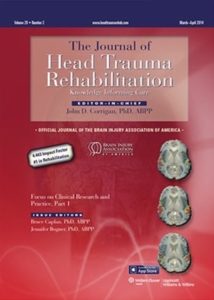Objective: The purpose of this article is to synthesize and appraise the evidence regarding the use of oculomotor-based vision assessment to identify and monitor recovery from mild traumatic brain injury (mTBI). Specific objectives are to (1) identify changes in oculomotor-based vision following mTBI; (2) distinguish methods of assessment; (3) appraise the level and quality of evidence; and, if warranted, (4) determine clinical recommendations for assessment.
Methods: A systematic review was undertaken to identify and appraise relevant literature. A search was conducted of 7 databases of peer-reviewed literature from January 1990 to January 2015. Articles were included if study populations were clearly identified as having mTBI and used an assessment of oculomotor-based vision. Articles with pooled data (eg, mTBI and stroke), addressing afferent visual function (eg, visual field deficits) or using single case designs, were excluded.
Results: Twenty articles were selected for inclusion. Exploratory findings suggest that measurements of saccades, smooth pursuit, and vergence are useful in detecting changes associated with mTBI. Assessment methods included eye tracker protocols, optometric assessment, and the King-Devick test.
Conclusion: The strength of this evidence is not yet sufficient to warrant clinical recommendations. Research using rigorous methods is required to develop reliable, valid, and clinically useful assessment protocols.
Summary Points:
- Changes in saccadic eye movements are reported in individuals with mTBI.
- Saccadic eye movements are the most investigated eye movement in sports-related concussion literature where the need for a sideline tool to objectively detect impairment due to mTBI has been recognized.
- Studies used the King-Devick (K-D) Test to examine the effect of mTBI on saccadic eye movements.
- The K-D Test requires very minimal setup or administrator training and is typically administered in less than 2 minutes.
- A high degree of test-retest reliability using inter-class correlation is reported with the K-D Test in relation to investigating head trauma.
- The K-D Test measures saccadic reaction time which has been shown to be slowed following mTBI (as compared with controls) in eye tracking studies.
- Results from all sports-related studies reviewed indicate that performance on the K-D Test was significantly slowed following concussion compared with preinjury baseline performance.
- Test scores improved to baseline levels (pre-concussion) within 2 to 3 weeks post-injury.
- Multiple oculomotor and cognitive skills are used to complete the K-D Test. Abnormalities in test performance are not specific to saccades and may be reflective of impairment in other oculomotor (eg. vergence, accommodation) and cognitive functions (eg. attention).

